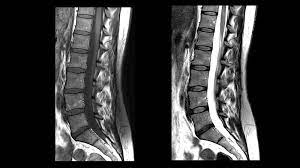Application of Panoramic T2 Sequence for Magnetic Resonance Imaging of Lumbosacral spine
Aplicación de Secuencia T2 Panorámica para Resonancia Magnética de Columna lumbosacra
DOI:
https://doi.org/10.25176/RFMH.v21i2.3452Keywords:
Magnetic resonance imaging, Radiologic technology, SpineAbstract
Introduction: The evaluation of the total spine by magnetic resonance imaging in a T2-weighted single sequence using Software Composing previous planning, called panoramic, would be beneficial in the study of lumbosacral spine for the additional information that could be obtained. Objective: To analyze the application of T2 panoramic sequence for magnetic resonance imaging of the lumbosacral segment. Methods: Retrospective and cross-sectional study executed with 186 cases selected by stratified probability sampling, between 18 and 60 years old, using a form consisted of a general sheet and an analytical sheet obtained from the request for radiological study and the examination itself. Results: Of the total, 80.1% were in the adult stage of life, and 53.8% were female, and 52.7% had the suspicion of herniated disc as a specific diagnostic presumption. Degenerative pathologies were mainly presented, with 93%, having herniated discs as the most frequent with 57%, which included extruded, protruded and migrated hernias with 40.6%, 37.9% and 21.5 % respectively. Likewise, it was verified with hypothesis test that this acquisition allows to localize 50% more findings in contrast to the usual examination, defining that this sequence should be applied because it localizes findings in a greater number in comparison to the lumbosacral selective examination. Conclusions: In general, it was defined that the application of this panoramic T2 sequence is more usefulness for a better evaluation, because it achieves greater findings, resulting as main pathologies in lumbosacral, cervical and dorsal segments those of a degenerative type, standing out the herniated discs.
Downloads

Downloads
Published
How to Cite
Issue
Section
License
Copyright (c) 2021 Revista de la Facultad de Medicina Humana

This work is licensed under a Creative Commons Attribution 4.0 International License.



































